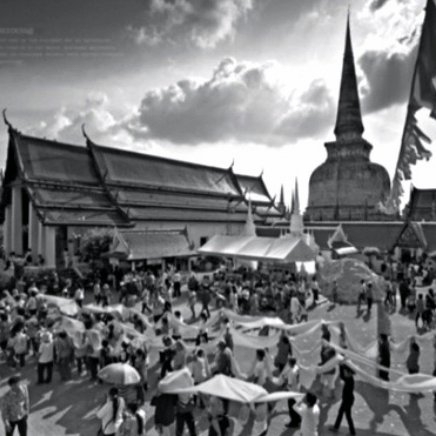Research & Article

The Guidelines on Landscape Improvement to Promote the Cultural HeThe Guidelines on Landscape Improvement to Promote the Cultural Heritage Value and Significance of Wat Phra Mahathat Worramahawihan, Nakhon Si Thammarat for World Heritage Nomination
By Wirut Thinnakorn
Published on 25 February 2024
Cultural Heritage Management, World Heritage
Location of original sources
Academic Journal of Architecture, Vol. 64 (2015): January - December
Situated in Wat Phra Mahathat Worramahawihan, Nakhon Si Thammarat Province, Phra Borommathat Chedi, which is the Sri Lankan Buddhist art or bell-shaped stupa, has great historical and archaeological value on various aspects, namely the expansion of Buddhism in Southeast Asia, architectural heritage as well as beliefs and traditions in terms of customs practiced through time.
The city of Nakhon Si Thammarat including many public and private sectors altogether proposed Wat Phra Mahathat Worramahawihan, Nakhan Si Thammarat as a UNESCO’s World Heritage site. School of Architecture and Design, Walailak University was assigned to study and design the renovation to the core zone of Wat Phra Mahathat Worramahawihan based on the World Heritage’s selection criteria, law and regulations, heritage conservation method, history, beliefs, traditions and customs. Then, the findings on land use, thoroughfares, open space, visual perception, and cultural tourism management were utilized as the guidelines on landscape improvement and suggestions on imposing appropriate measures so as to underscore the importance of Wat Phra Mahathat Worramahawihan as a marked historic site and to meet the criteria of the UNESCO’s assessment on Outstanding Universal Value (OUV) of cultural heritage sites.